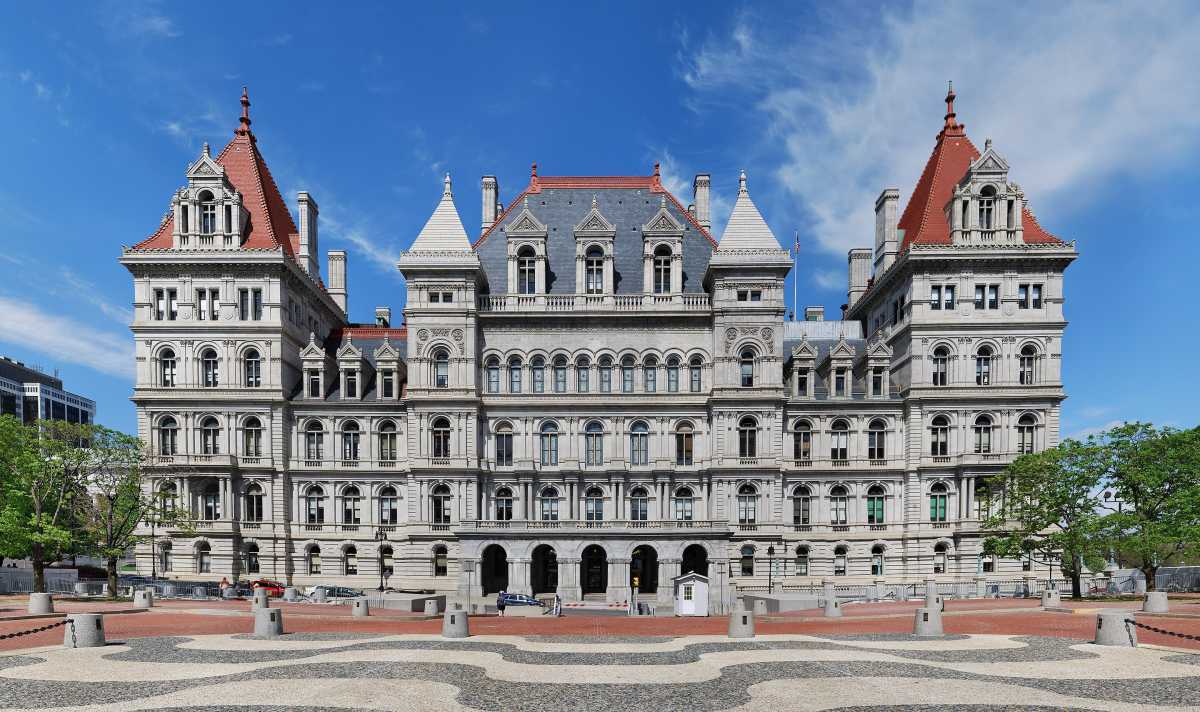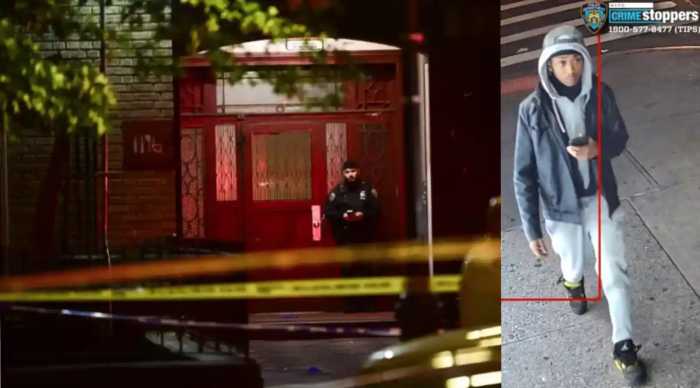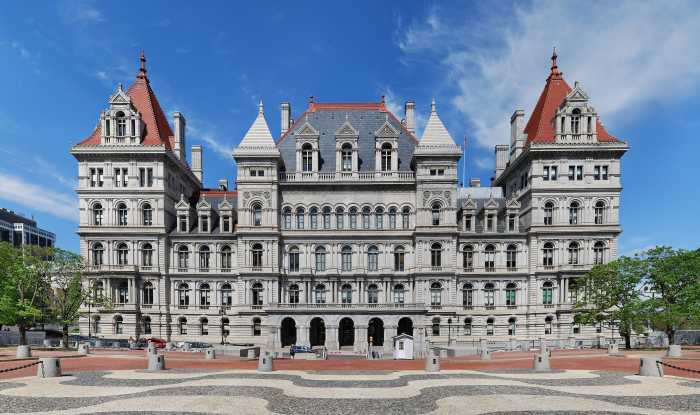By Lincoln Anderson
“RENT,” the award-winning musical about East Village squatters, came home to the neighborhood that was its inspiration for a week of filming for a new movie version. By most accounts, it was one of the most massive film shoots seen in the area in recent memory. Towering cranes with blazing lights illuminated entire building facades at night and residents reported more streets than usual for film shoots being closed off.
Nevertheless, the film crew took efforts to work with the community, residents reported, and the film also made the disruption go down easier by paying block associations where streets were impacted or buildings were used, as well as paying the Parks Department for filming in Tompkins Sq. Park and even Community Board 3 for its assistance.
In addition, a new initiative by the Mayor’s Office of Film, Theatre and Broadcasting is said to be improving film crews’ sensitivity to the community.
An updated version of the opera “La Boheme,” “RENT” is set in the East Village of the 1980s and deals with modern-day issues of homelessness, drugs and AIDS. The production — shooting exteriors — went through last week and wrapped up Monday. Interior shots for the movie were done in San Francisco.
Susan Stetzer, C.B. 3 district manager, worked with the film crew beforehand, offering advice on outreach to the community. Although the board received complaints in early 2004 about filming, this time there was only one complaint about parking related to the shoot, she said.
“They were filming in a lot of places,” Stetzer said, “and they were actually pretty good in terms of responsiveness to the community — and it’s bringing a lot of money into the neighborhood.”
Stetzer noted that the same block association on Avenue B that had complained to C.B. 3 about filming last year was much happier with how the “RENT” shoot went.
“It’s very evident the mayor’s office is asking [film crews] to deal with community concerns,” she said.
According to Stetzer, “RENT” gave $5,000 to the Parks Department for use of Tompkins Sq. Park; $1,000 to several block associations; and also contributed to the public school on 12th St. between First Ave. and Avenue A, another film location. In addition, the film gave money to the community board, $2,000 — apparently for the board’s assistance.
“Nobody did that before,” Stetzer noted.
Alyssa Adams, a member of the 11th St. ABC Block Association, was pleasantly surprised at how the filming went.
“I think some people were upset because our blocks have been through a lot,” Adams said, referring to the recent Con Ed steam pipe project and a slew of new construction. But she said she spoke to four or five fellow block association members who said things went well. The association will vote on how to spend the $1,000 it received.
Relating one of her own encounters with the film crew, Adams said, “I was walking my dog at 6:30 p.m. and the big trucks were rolling up and they were idling; and I was prepared to get all huffy and bitchy. They said they’d turn them off as soon as they finished unloading. They were very friendly to me — they petted my dog.”
Likewise, MaryBeth O’Hara, a member of the Avenue B Block Association, which covers Sixth to Seventh St., felt “RENT” was an improvement over previous shoots. A 22-year neighborhood resident who fixed up her formerly abandoned building under the homesteader program, she said this film shoot was the least painful to date.
“To be honest, we’ve been ready to pull our hair out in the East Village, because there were so many crews coming down here and they weren’t giving us anything,” she said. O’Hara said the $1,000 the association got will go toward planting new trees on the block.
“The last film they shot in front of my building, they duct taped over the light on the lamppost and left,” she noted, adding that this time a member of the crew happily obliged her when she asked him to remove the tape afterwards.
Like Adams, O’Hara said the film’s community liaison, Jason Farrar, was considerate in working to address people’s complaints. Knowing that the film shoot was coming, O’Hara left her car Upstate for the week.
O’Hara said the family of “RENT” playwright Jonathan Larson was in the neighborhood for the production. Larson died of an aneurysm right before the play debuted in 1996.
Julianne Cho, assistant commissioner of the Mayor’s Office of Film, Theatre and Broadcasting, said the office has been proactive in trying to reduce the impact of the shoots and also to get the film crews to spend money where they shoots are taking place.
“We’ve been reaching out to the community boards and elected officials, giving out phone numbers, trying to make it so the work proceeds more smoothly and to be more proactive.”
Cho said the office plans to do a seminar for production assistants — since, as she noted, “they’re really the front line” — led by a veteran in the field, on how to improve relationships with the community.
Because of the recently passed Made in New York tax incentive program, under which the films get a total of a 15 percent tax credit from the city and state for working in New York City, Cho says the film office has anticipated an increase in film shoots in the city. For that reason, the office has been encouraging movie crews to spend their money locally, whether it be on restaurants and catering or dry cleaning.
“We are expecting more production, but we want this to work better for everyone,” Cho said.
Also, she added, the mayor’s office has been working to lessen the impact of shoots by restricting the amount of space they take up.
“We have drastically reduced the footprint of film shoots,” she said, noting that the shoots aren’t allowed to take up as much parking as before.
Film and TV constitute a $5 billion industry in New York City, employing 100,000 people locally, she added.
But not all were glowing about “RENT.” Much of Avenue B between Ninth and Sixth Sts., as well as Seventh St.
between Avenues A and C, was completely blocked to car traffic and sometimes pedestrians. And the film crew constantly told people to cut through Tompkins Sq. Park.
“You couldn’t move in the East Village,” said photographer Bob Arihood. “No one that I talked to was happy about it. They feel that they’ve thrown up their hands and they can’t do anything about these film shots. That we just have to live with it, that it’s imposed on us. They were there all last week — they blocked the streets two days ahead of time. They had a team of people towing cars.”
Small merchants reported a drop off in business and complained the production didn’t compensate them at all.
“It cut down on my business,” said Ray Alvarez, who runs a hot dog and frozen yogurt store at Seventh St. and Avenue A. “They were here for days, all night and day. I have a 24-hour business. People were afraid to stop. They hired special security that told people, ‘Keep moving.’ I only made $300 for five or six days. I lost about $1,500. I had to borrow on my credit cards to pay my bills.
“Other movies, ‘NYPD Blue,’ they blocked the whole area — no traffic at all — but I got paid $1,000,” Alvarez noted. “Bruce Willis, too. He paid everybody $1,000. ‘King of the Gypsies,’ they paid everybody. They had 10,000 people dressed as gypsies. The actors were always drunk.”
Cina Yue, a manager at Alphabets gift shop, said the film shoot affected business, but so did the snowy weather.
“It was slower than usual. I wouldn’t say it was terrible,” she said, “but it was a damper on our sales.”
For some reason, the exterior of Vazacs bar, at Seventh St. and Avenue B was made over by the film shoot into Life Cafe, which is at 10th St. and Avenue B. Paying homage to the work of the East Village’s Jim “Mosaic Man” Power, a mosaic border was installed around the outside of Vazacs.
Speaking of rent, Alvarez recalled how much things have changed in the neighborhood from 40 years ago when he moved in.
“When I lived on 13th St. my rent was $32,” he said. “Some old people with rent-controlled apartments paid $8.”







































